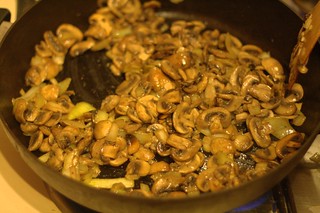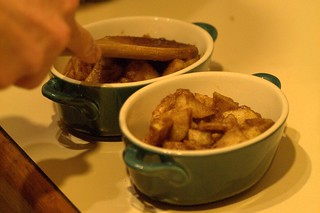This article originally appeared on Geek Feminism.
A few times within the lifetime of this blog, there’s been a major emergency in geekdom: a geek girl has needed a confidence boost.
I hear you cough. Someone just said “geek girl” on Geek Feminism, the home of “ahem, geek women, THANK YOU”?
No really, I mean it, a geek girl. A prepubescent girl has been bullied or heard some gender essentialist crap, and a call to arms goes out. The best known is probably Katie Goldman, the then seven year old whose mother wrote in November 2010 that Katie was being bullied for liking Star Wars, a boy thing:
But a week ago, as we were packing her lunch, Katie said, “My Star Wars water bottle is too small. It doesn’t hold enough water. Can I take a different one?” She searched through the cupboard until she found a pink water bottle and said, “I’ll bring this.”
I was perplexed. “Katie, that water bottle is no bigger than your Star Wars one. I think it is actually smaller.”
“It’s fine, I’ll just take it,” she insisted.
I kept pushing the issue, because it didn’t make sense to me. Suddenly, Katie burst into tears.
She wailed, “The first grade boys are teasing me at lunch because I have a Star Wars water bottle. They say it’s only for boys. Every day they make fun of me for drinking out of it. I want them to stop, so I’ll just bring a pink water bottle.”
Katie’s story went viral including at the official Star Wars blog and a year later CNN reported that at GeekGirlCon when a brigade of Storm Troopers formed an honor guard for Katie, and that there’s an annual Wear Star Wars day as a result.
We had our own smaller burst of geek support on the Geek Feminism blog in May this year, for five year old Maya, who was turning away from her love of cars and robots. 170 comments were left on our blog for Maya, second only to Open Letter to Mark Shuttleworth (200 comments) in our history. In addition, it wasn’t an especially difficult thread to moderate as I recall: a few trolls showed up to tell Maya goodness knows what (sudo make me a sandwich LOL?) but in general people left warm, honest, open stories of their geek life for Maya.
Here’s something I was struck by: when I tweeted about Maya’s post, back in May, I saw replies from men saying that they were crying (with joy, I assume!) about the response to Maya. I have to say I do NOT see a lot of admitted crying about other posts on our blog, no matter how positive or inspirational. (People love the existence of the Wednesday Geek Women posts, but they are consistently our least read and commented on posts.) Or crying about stories that are negative and horrifying either.
It’s going to be hard to stand by a statement that I don’t begrudge Katie and Maya their outpouring of support, but: I don’t begrudge Katie and Maya their outpouring of support. I don’t think they should have less of it.
… but I think geek women and other bullied or oppressed geeks should have more.
Thus I do want to ask why girls? Why do we not have 170 comments on our blog reaching out to women who are frustrated with geekdom? I want to get this out in the open: people love to support geek girls, they are considerably more ambivalent about supporting geek women.
I’ve compared harassment of adults with bullying of children before: they have a lot in common. What they don’t seem to have in common is a universal condemnation from geekdom: bullying children? Totally evil*. Harassing adults? Eh… evil, except you know, he’s such a great guy, and he hasn’t got laid in a while, and (trigger warning for rapist enabling) he does have the best gaming table, so what are you gonna do, huh?
There are a number of reasons, I know, even aside from the (provocative!) title of the blog post. Some of them are more sympathetic than others:
- Talking to adults about overcoming difficulties is harder. There can’t always be as much optimism or tales of It Gets Better. For some adults, that’s bullshit. (It’s not always true for children either and telling children this can be a disservice too, but it is more culturally comfortable.)
- Adults are often angry when they’ve been mistreated. In this case, feminists are often angry. It’s harder to engage with angry people. They (we) are less appealing. We may not be grateful for your thoughts. Sometimes we pick them apart publicly if we don’t like them enough. And call you mean names.
- When a child is bullied by another child, the bad guy is reassuringly definitely not you.
- Children don’t talk back, or can’t. If an adult says that It Gets Better, the appropriate role for the child is to smile and look grateful. (This is also true of women when listening to men, but generally somewhat less so.)
- Many of us are more familiar with the experience of being a bullied child than being a harassed or oppressed adult, and can be empathetic more easily.
- We really really want to believe that things will be basically OK for Katie and Maya, even if they haven’t been for us and people we love.
There’s no easy answer. Many of us are very deeply invested in It Gets Better rhetoric, because the alternative is sure pretty sucky. But at the same time, if you’re doing one thing to stop gendered bullying this year, say, leaving the 170th supportive comment for a five year old girl, while kind, was probably not the single best use of your one thing. Join the fight. Make it better yourself. And, since you aren’t in fact limited to one thing, leave kind or supportive or co-signed righteously angry comments too, while you’re at it, and not only for children.
* At least, in the context of these discussions. I am far from believing that geeks are universally actively working to save children from bullying, nor that they are incapable of perpetrating child abuse.







 It’s also just about impossible to get one as a minor if your guardians don’t agree to you travelling.
It’s also just about impossible to get one as a minor if your guardians don’t agree to you travelling.